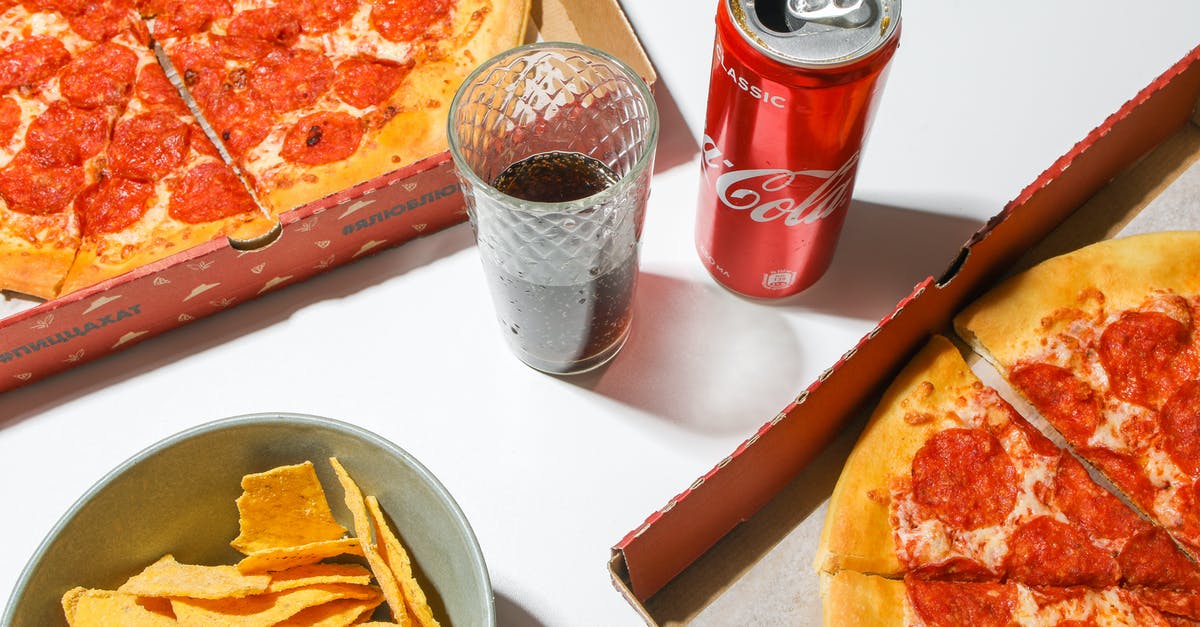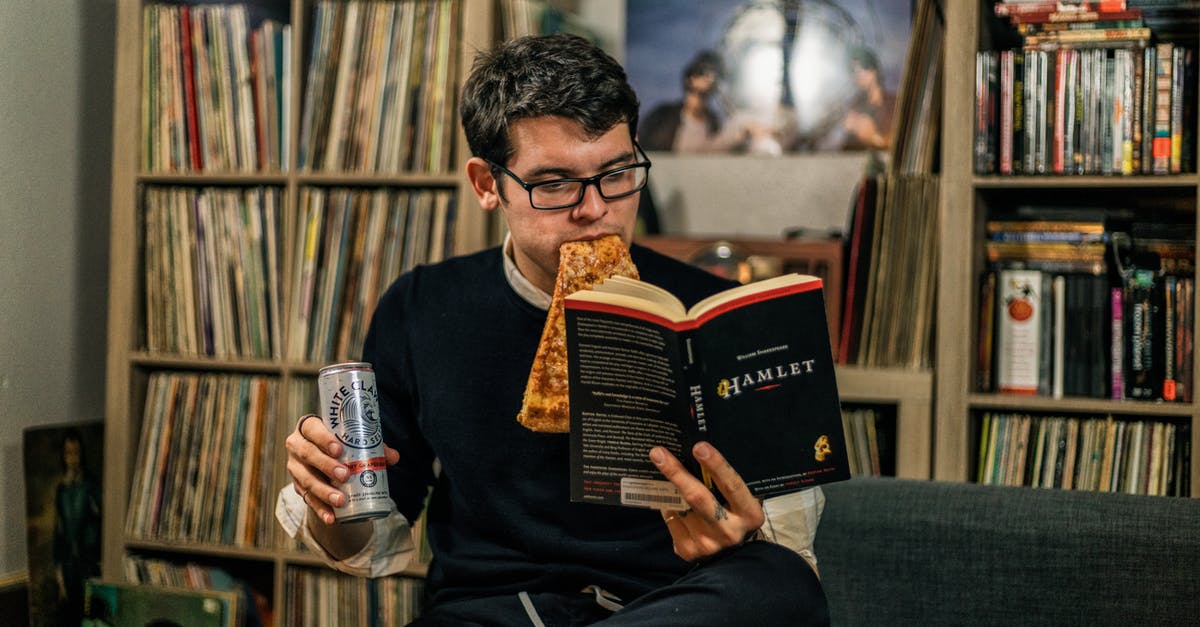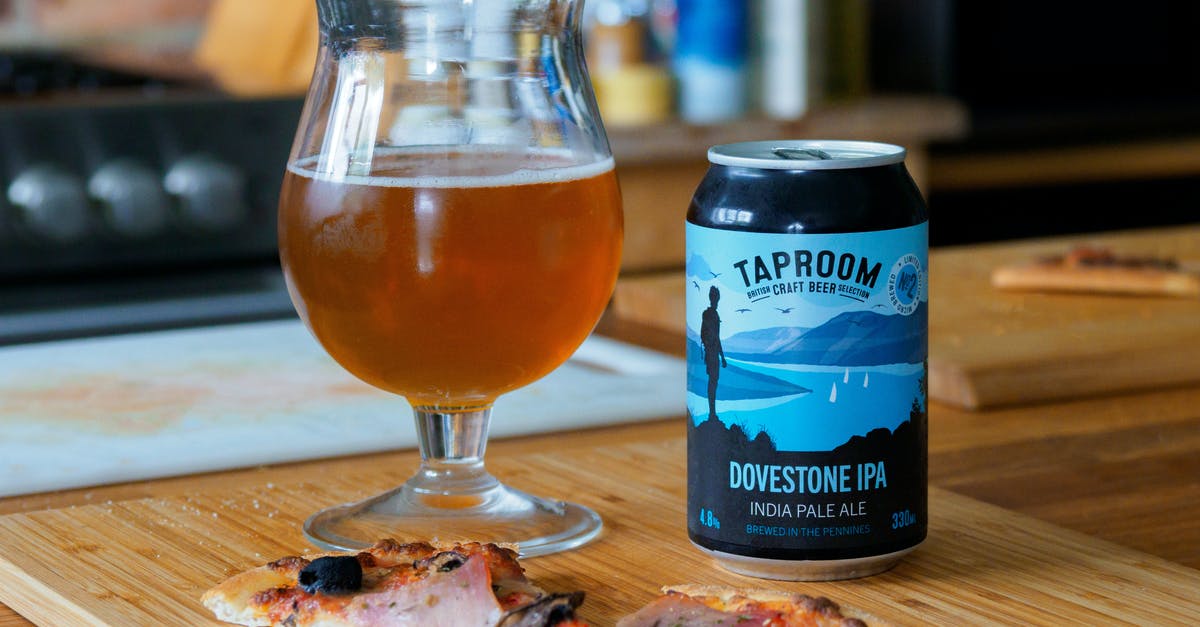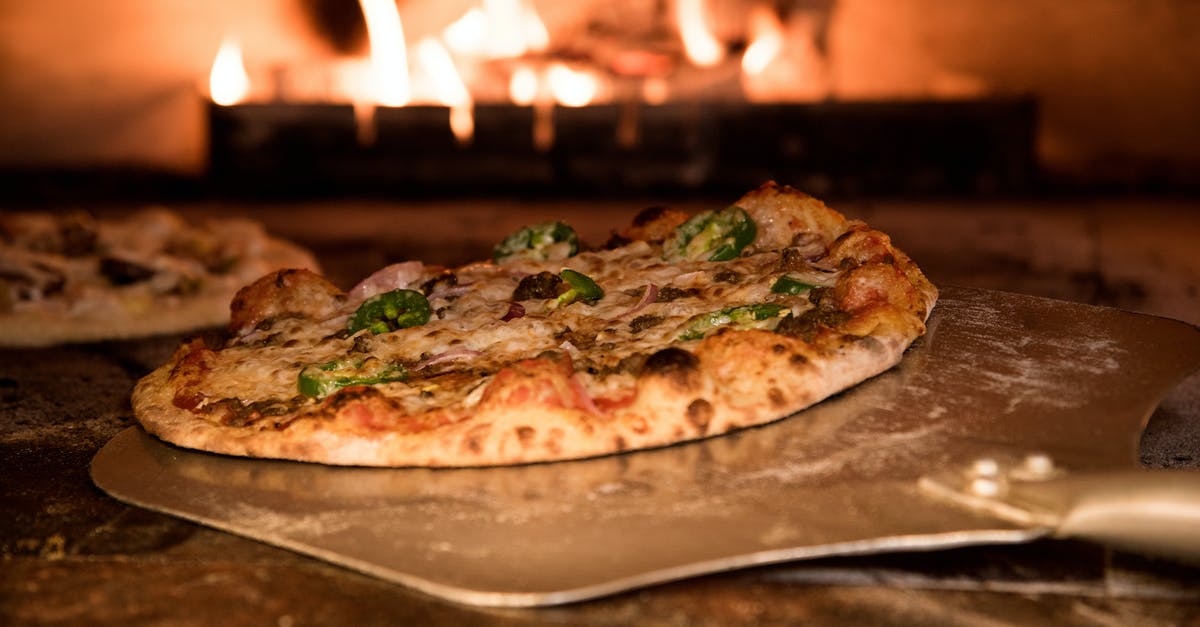How can I ensure that my pizza is properly cooked?

I occasionally make homemade pizza using pre-made dough (similar to this), however I can never seem to get the dough cooked properly all the way through. It ends up with nicely done edges but an underdone middle, or a properly cooked middle but overdone edges (occasionally I get lucky and get overdone edges with an underdone middle too).
Generally for cooking it I follow the instructions on the packaging, about 15 minutes at about 450F. It is cooked on an upside-down cookie sheet.
What can I do to get a pizza that is the proper done-ness throughout?
Best Answer
Get a pizza stone. It is important to preheat the stone with the oven. Put it in the oven before you begin to preheat, if your not in a hurry...let the stone and the oven hold at temperature for a while before you put the pizza on it. The stone will radiate heat into your dough evenly. Stones are 'better' than metal (like a cookie sheet) because they release the heat into the dough 'more evenly' If you have a 'pizza pan' putting that on the stone will work well also.
Completely preheat your oven. Many electric ovens use the broiler coil (on top) to heat the oven to the desired temperature faster, if you attempt to bake your pizza during the pre-heat stage the top is likely to cook faster than the dough. You may eyeball your pizza as done because the top 'looks' ready, when the dough is not yet finished.
One of the common culprits in an 'underdone' middle is that liquid has soaked into the dough causing it to cook more slowly. If your sauce is too thin you might want to thicken it up some. Also, spreading a thin coat of soft (not melted) butter over the top will form a barrier to prevent the liquid in the sauce from soaking in. Finally, you might try putting the grated cheese on first and then spreading the sauce over that. As the cheese melts and the sauce warms it will settle into (approximately) the expected layers, but if the sauce has been kept from the dough for a few minutes it will not soak in as much.
If you aren't satisfied with these results then you might try:
Get an oven thermometer. The temperature actually in your oven will vary from 'the dial'. It's expected, just know what you're actually getting. You want your oven to be 'very hot' (professional pizza ovens will range from 600°F - 900°F) your home oven is unlikely to get 'that' hot but 450°F should be close enough to do the job.
As a last resort... par bake the crust. Put the un-covered crust in the oven for a few (5ish) minutes first, pull it, then top it and return it to the oven.
I hope you find something here to help with your pizza woes.
Pictures about "How can I ensure that my pizza is properly cooked?"



Quick Answer about "How can I ensure that my pizza is properly cooked?"
The most important steps to avoid an undercooked soggy pizza are to cook at the correct temperature, stretch your pizza out very thin, and use a pizza stone or baking tray. Also, reduce the moisture in your wet ingredients and use less of them. Be sure to try out the bonus tip if needs be.How do I make sure my pizza is cooked?
There are 2 ways to tell when your homemade pizza is cooked:Why is my pizza raw in the middle?
Chances are you have under cooked the pizza dough, so a few more minutes will finish the bake and crisp up any wetter toppings. If the toppings are looking on the verge of burning, turn down the oven slightly so it isn't so fierce, and move the pizza to the bottom rack.15 Mistakes to Avoid When Making Pizza at Home 🍕
More answers regarding how can I ensure that my pizza is properly cooked?
Answer 2
Try preheating your cookie sheet before laying the uncooked pizza on it, otherwise it may act as a heatsink/insulator until it reaches the right temperature, delaying the cooking (particularly near its center of mass). I like using a piece of parchment paper to make transferring the dough between my tray and the counter easier.
Answer 3
I have a pizza stone, which makes a big difference. But I don't always use it because I have a pizza pan that's bigger than the stone. There are a few things you can try:
Roll the base thinner, so it cooks through quicker. When rolling I tend to flour quite heavily, which reduces the amount the sauce soaks in.
Cook directly on the oven shelf, with a baking tray underneath to catch anything that falls off. This seems to work better for ready-made/par-baked bases. I've never tried parbaking a homemade base but think it would be tricky to get the texture right.
If you like a lot of sauce, heat it just before topping the pizza. This will help the temperature of the base come up quicker.
Don't mess around putting the pizza in -- I've seen people open the oven, walk across the kitchen to fetch the food, position it just perfectly, change their mind about the shelf height, then get round to closing the door. Instead, put the shelf near the top before you preheat, and have the pizza in one hand while you open the door with the other, or at least within reach.
A good preheat is important for something that cooks so quickly, even if your oven doesn't boost the preheat with the grill (broiler) element. I turn the oven on before rolling out/stretching, so it's been preheated for some time when I put the topped pizza in (especially as my small person likes to help withe the topping so it takes a while). This means that all the metal in the oven is up to temperature when it goes in. Note that I don't preheat the pan, as I stretch the base to fill it, then top the pizza on the base -- it's a bit unwieldy otherwise.
Cooking two pizzas on two shelves makes things much harder -- that's partly why I use my (rectangular) tray instead of my stone, and make one big pizza.
Answer 4
I'm making homemade pizza right now. I make my own dough from scratch and incorporate the basil and oregano into the dough as I knead it. I let it rise for 40 min then I punch it down and roll it out to fit my pan. I put the dough on the pan and use a roller perforator to punch hundreds of holes in the crust. I then pre bake the dough at 425 deg for 12-15 minutes till the crust is browned. I then brush on olive oil and crushed garlic then spread the sauce and add all the toppings. I put it back in the oven at 435 and set the timer to 25 min. I then keep checking till all the cheese is melted and the middle is bubbling. Perfect pizza everytime.
Answer 5
An easy way to get more even cooking is to stop cooking just before the edges get done - turn off the power and leave it in the oven to cook in the residual heat. The heat on the outside is gentler, less direct, and it takes longer so there's more time for the temperature to even out in the middle.
Depending on how long you leave it in there and perhaps the ratio of pizza size to oven size, it can get quite well browned and well cooked in the extra time. For really thin precooked pizzas (ie, tortilla pizzas) I could cook two and sometimes three in the time between turning the oven off, and it cooling to a temp too low to cook with. With a thicker pizza, it can go from pale and watery to deeply browned and dry around the edges. This was with a small baking stone, but also a tiny oven - so be aware that some parameters may vary, and just keep an eye on it.
As a disclaimer, part of this may depend on what kind of pizza you like, how you like it cooked, etc. I use it for when my pizzas are a bit thicker in crust if the center isn't browning enough or looks soggy but the crust is done/almost done, or when I've really thin pizzas that cook fast enough it's not worth it to keep the oven heating the whole time. Then again, I've a lot of tolerance for variation, and I do know some people would not find it an acceptable cooking method... all I can suggest it try it and see.
Other options may include par-baking the crust, or just settling for lower temps & longer cooking times to begin with (which is a pretty standard thing to try when dealing with outside overcooking/inside underbaking). It is likely to change the results at least a bit, how the crust cooks, its taste and texture...but it my not be a difference you mind. The best way to make pizza is the way that makes one you enjoy eating, so don't be afraid to tweak at the instructions if you don't like something about the result you're getting.
I also find a baking stone or baking tile really useful - mine lives in my oven full time - but it isn't necessary if you aren't sure enough to invest in one.
Sources: Stack Exchange - This article follows the attribution requirements of Stack Exchange and is licensed under CC BY-SA 3.0.
Images: Polina Tankilevitch, Welldon Potroast, Brett Jordan, Eneida Nieves
